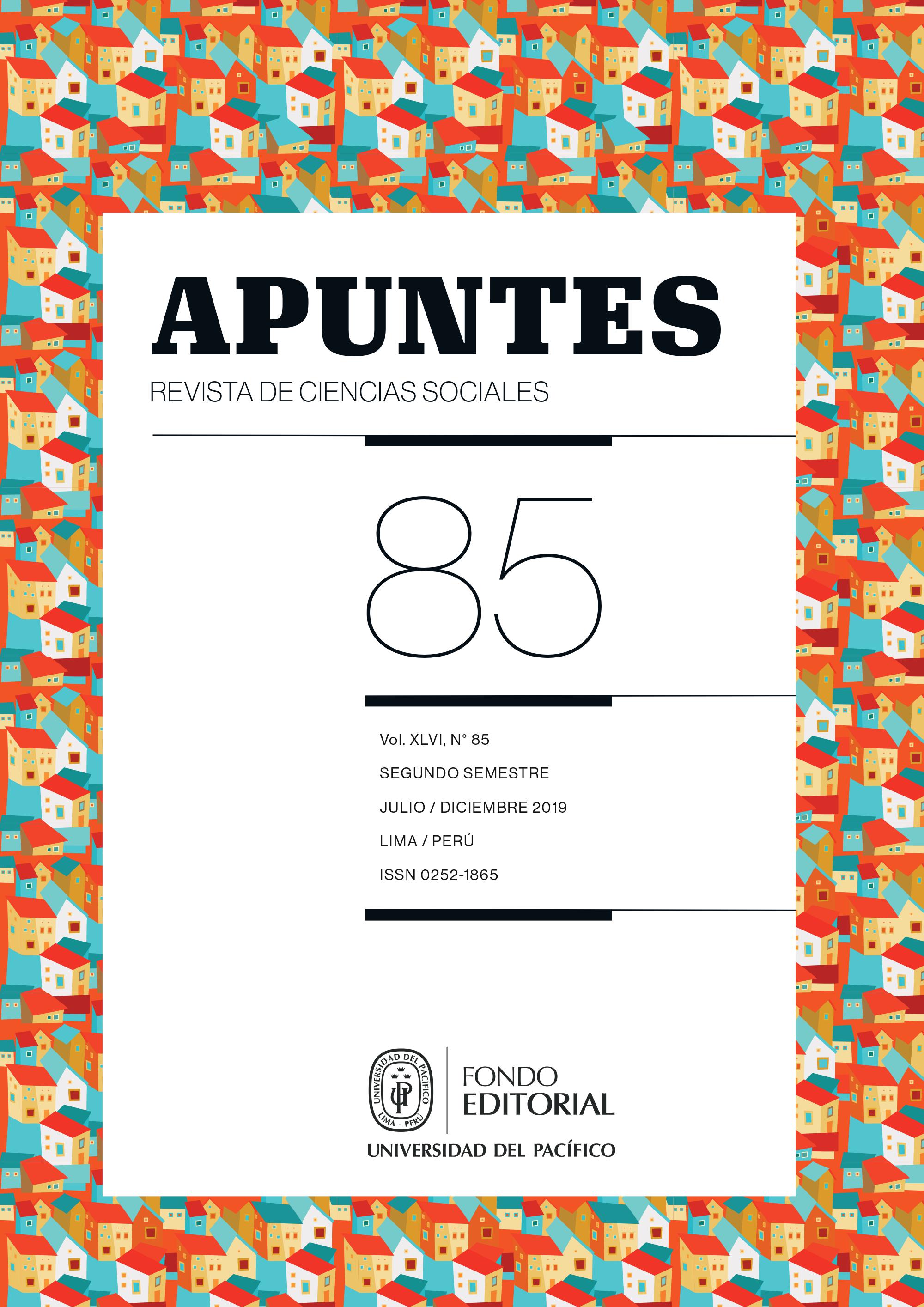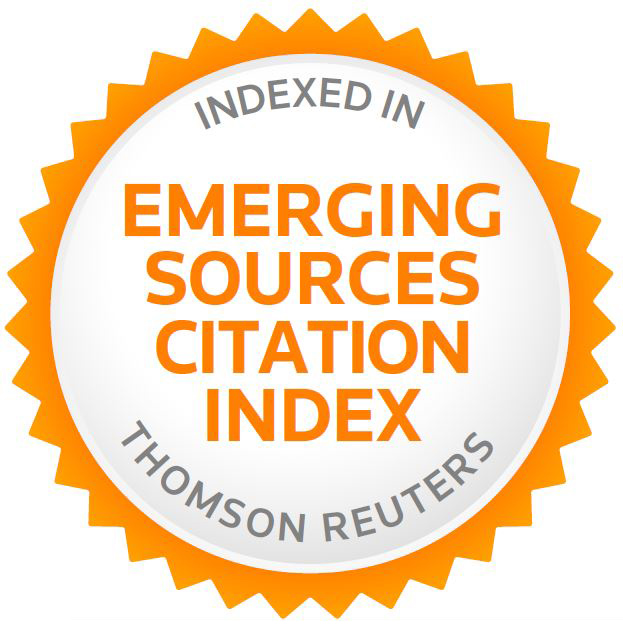Determinantes institucionales del Estado para las metas intermedias en China: tecnología nativa, desarrollo de la industria e internacionalización de empresas
Resumen
Este artículo analiza el mejoramiento de la calidad institucional del Estado como un factor definitivo del éxito económico de China, obtenido mediante el logro de metas económicas intermedias. La teoría convencional respecto a las fuerzas del mercado como el único determinante de la liberalización no explica cabalmente el auge económico chino. Con el fin de ponerse a la par de los países desarrollados, China ha promulgado incesantes reformas, con un ligero hincapié en reformas políticas, y ha llevado a cabo un concurrente énfasis continuo y agresivo en reformas económicas. A través de esta combinación de diseños y estrategias estatales, China ha alcanzado las metas intermedias requeridas para sostener las tasas de crecimiento económico rápido y estable observadas en décadas recientes. Para analizar este proceso, el presente estudio se enfocará en el análisis de tres enfoques: a) elemento tecnológico; b) desarrollo de la industria automotriz; y c) internacionalización de empresas chinas. La bibliografía reciente relacionada con el enfoque institucional ofrece un marco teórico adecuado para entender el desarrollo económico reciente en China y el mejoramiento de la calidad de las instituciones del Estado.Referencias
Altenburg, T., & Schmitz, H. (2008). Breakthrough? China’s and India’s Transition from Production to Innovation. World Development, 36(2), 325-344.
Chen, A. (2002). Capitalism Development, Entrepreneurial Class, and Democratization in China. Political Science Quarterly, 117(3), 401-422.
Comisión Económica para América Latina y el Caribe, Cepal. (2018). Explorando nuevos espacios de cooperación entre América Latina y el Caribe y China. Recuperado de https://repositorio.cepal.org/bitstream/handle/11362/43213/1/S1701250_es.pdf
Dittmer, L. (2004). Ghost of the Strategic Triangle: The Sino-Russian Partnership. En R. Roett, & G. Paz (Eds.), China’s Expansion into the Western Hemisphere: Implications for Latin America and The United States (pp. 207-224). Washington: Brookings Institu-tion.
Dussel, E. (2018). Monitor of Chinese OFDI in Latin America and the Caribbean 2018. Red ALC-China. Recuperado de http://www.redalc-china.org/monitor/
Ge, G. L., & Ding, D. Z. (2009). The Effects of the Institutional Environment on the Inter-nationalization of Chinese Firms. En I. Alon, J. Chang, M. Fetscherinm C. Lattemann, & J. R. McIntyre (Eds.), China Rules (pp. 46-68). Londres: Palgrave Macmillan.
Girón, A., & Correa, E. (2017). Reorganización financiera en Asia y América Latina en el período postcrisis. México: Universidad Nacional Autónoma de México.
Heginbotham, E. (2007). Evaluating China’s Strategy toward the Developing World. En J. Eisenman, E. Heginbotham, & D. Mitchell, China and the Developing World: Beijing’s Strategy for the Twenty-first Century (pp. 189-217). Nueva York: M.E. Sharpe.
Kurlantzick, J. (2008). China´s Growing Influence in Southeast Asia. En R. Roett, & G. Paz (Eds.), China’s Expansion into the Western Hemisphere: Implications for Latin America and the United States (pp. 193-212). Washington: Brookings Institution.
Liu, W., & Dicken, P. (2006). Transnational Corporations and «Obligated» Embedded-ness: Foreign Direct Investment in China’s Automobile Industry. Environment and Planning A, 38(7), 1229-1247.
Long, G. (2015). «One Belt, One Road»: A New Vision for Open, Inclusive Regional Cooperation. The Economic Future of China. Recuperado de http://www.asiasociety.org/speeches/lardy.html
May Hongmei, G. (2009). Natural Resources: Government Support for Chinese Compa-nies Global Hunt. En I. Alon, J. Chang, M. Fetscherin, C. Lattemann, & J. R. McIntyre (Eds.), China Rules (pp. 233-252). Londres: Palgrave Macmillan.
Mitchell, D., & McGiffert, C. (2007). Expanding the «Strategic Periphery»: A History of China’s Interaction with the Developing World. En J. Eisenman, & E. Heginbotham (Eds.), China and the Developing World: Beijing’s Strategy for the Twenty-First Cen-tury (pp. 3-25). Nueva York: Taylor & Francis.
Mochizuki, M. M. (2005). China-Japan Relations: Downward Spiral or a New Equilibrium. En D. Shambaugh (Ed.), Power Shift: China and Asia’s New Dynamics (pp. 135-150). Berkeley: University of California Press.
Morrisson, C., & Murtin, F. (2005). The World Distribution of Human Capital, Life Ex-pectancy and Income: A Multi-Dimensional Approach. París: OECD. Recuperado de http://www.parisschoolofeconomics.eu/docs/ydepot/semin/texte0506/MUR2005WOR.pd
Oksenberg, M. (2001). China’s Political System: Challenges of the Twenty-First Century. The China Journal, (45), 21-35.
Oresman, M. (2007). Repaving the Silk Road: China’s Emergence in Central Asia. En J. Eisenman, & E. Heginbotham (Eds.), China and the Developing World: Beijing’s Stra-tegy for the Twenty-First Century (pp. 60-83). Nueva York: Taylor & Francis.
Ravallion, M., & Shaohua, C. (2005). China’s (Uneven) Progress against Poverty. Journal of Development Economics, 82, 1-42. Recuperado de http://siteresources.worldbank.org/PGLP/Resources/ShaohuaPaper.pdf
Rawski, T. G. (1994). Chinese Industrial Reform: Accomplishments, Prospects, and Impli-cations. American Economic Review, 84(2), 271-275.
Schortgen, F. (2009). A Contextual View of Chinese Enterprise Internationalization. En I. Alon, J. Chang, M. Fetscherin, C. Lattemann, & J. R. McIntyre (Eds.), China Rules (pp. 15-45). Londres: Palgrave Macmillan.
Shirk, S. L. (2007). China: Fragile Superpower. Oxford: Oxford University Press.
Shirk, S. L. (2008). Japan: When the Chinese People Get Angry, the Result is Always Big Trouble. En S. L. Shirk. China: Fragile Superpower (pp. 140-180). Oxford: Oxford University Press.
Stallings, B. (2008). The US-China-Latin America Triangle: Implications for the Future. En R. Roett, & G. Paz (Eds.), China’s Expansion into the Western Hemisphere. Implica-tions for Latin America and the United States (pp. 239-260). Washington: Brookings Institution.
Teng, C. (2007). Hegemony and Partnership: China’s Strategy and Diplomacy toward La-tin America. En J. Eisenman, E. Heginbotham, & D. Mitchell, China and the Develo-ping World: Beijing’s Strategy for the Twenty-first Century (pp. 84-112). Nueva York: M. E. Sharpe.
The World Bank. (s. f.a). DataBank. The World Bank. Recuperado de http://databank.worldbank.org
The World Bank. (s. f.b). Historical Data Sets and Trends Data. Doing Business. The World Bank. Recuperado de www.doingbusiness.org/en/custom-query
The World Bank. (s. f.c). Worldwide Governance Indicators. The World Bank. Recupera-do de https://info.worldbank.org/governance/wgi/#home
Xu, X. (2012). Understanding China’s Growth: Past, Present, and Future. Journal of Eco-nomics Perspectives, 26(4), 103-124.
Yahuda, M. (2006). The Limits of Economic Interdependence: Sino-Japanese Relations. En A. I. Johnston, & R. S. Ross, New Directions in the Study of China’s Foreign Policy (pp. 162-185). Stanford: Stanford University Press.
Yang, D. L. (2006). Economic Transformation and its Political Discontents in China: Authoritarianism, Unequal Growth, and the Dilemmas of Political Development. An-nual Review of Political Science, 9, 143-164. doi 10.1146/annurev.polisci.9.062404.170624
Zheng, Y. N. (1994). Development and Democracy: Are they Compatible in China? Poli-tical Science Quarterly, 109(2), (pp. 235-259).
Zhou, Y. (2008). Synchronizing Export Orientation with Import Substitution: Creating Competitive Indigenous High-Tech Companies in China. World Development, 36, 2353-2370.
Zi, Z. (2004). The Clash of Ideas: Ideology and Sino-US Relations. En Z. Susheng (Ed.), Chinese Foreign Policy: Pragmatism and Strategic Behavior (pp. 224-242). Londres: M. E. Sharpe.

Esta obra está bajo licencia internacional Creative Commons Reconocimiento 4.0.
Apuntes, revista de Ciencia Sociales publica todos sus artículos y reseñas bajo la licencia Creative Commons Attribution (CC BY 4.0) con el objetivo de fomentar el intercambio académico a nivel mundial. Por ello, la obra en cuestión puede ser distribuida, remezclada, retocada, etc., como el autor y los lectores de la misma lo estimen conveniente. La única condición es que se cite a la revista Apuntes, revista de Ciencias Sociales como entidad editora del texto.








.jpg)



